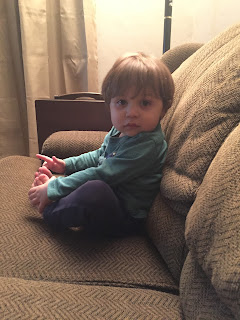Just the Facts
It is said that parents are their children's best advocates. Since Avery's diagnosis, I have spent a lot of time researching and learning whatever I can, from the basic facts to others personal experiences with having a scoliosis baby. Some may think it's crazy, but believe me, it has helped us out a lot in many ways. So, today I would like to share with you all some of the basics of what I have learned through this journey so far.
Infantile scoliosis is first diagnosed between birth and 3 years of age. It is most commonly found in males. There are several types of scoliosis for which the causes or origins are well known and understood, but most cases of infantile scoliosis are considered idiopathic, which means the causes are unknown. However, there are two possible theories that are being researched. The first is the intra-uterine molding theory, which suggests that the spine is bent at the time of birth due to abnormal positioning in the uterus, and it worsens with growth after the baby is born. The second theory is the postnatal theory. This theory suggests that external pressures are placed on the spine after birth, which could be due to an infant being positioned on his or her back for extended periods of time in the crib while they are sleeping, not having enough tummy-time while they are awake, and the use of baby swings and bouncer chairs.
Many of you, I'm sure, may still be asking yourselves "Well what is the big deal? It's just scoliosis. Lots of people have it and they are just fine." In many ways, infantile scoliosis is very different compared to, say, adolescent scoliosis. It can be much more dangerous and possibly even life threatening. First, unlike someone much older, an infant's spine is still rapidly growing, their organs are still developing and their bones have not yet fully hardened. If untreated, the scoliosis will quickly progress and worsen. The rapidly growing curve can cause a deformity in the chest wall which can lead to problems with lung development and the development of other organs. This can result in failure to gain height and weight, and in severe cases can result in decreased life expectancy. Treatment is also very different. With infantile scoliosis, care must be taken to provide a treatment that will control the progression while also allowing the spine to grow. There are a variety of treatments available, and include bracing and casting, halo gravity traction and an assortment of different distraction hardware procedures depending on the severity of the condition. No matter how successful the treatment is, though, the child will need to be monitored throughout their entire childhood to make sure the scoliosis has not developed again.
Infantile scoliosis does not typically cause any pain. In most cases where the child is experiencing pain, it is from an underlying condition that could also be causing the scoliosis. Scoliosis babies are still able to play, walk, and crawl. Many of them still meet their developmental milestones right on time, and appear to be just like any other healthy and happy baby.
I know one baby, for sure, who does not let his scoliosis slow him down at all!
 |
| Fun day at the farm! |
One of the reasons I started this blog was to hopefully spread some awareness. As I have mentioned before, infantile scoliosis is still quite rare. Many doctors still don't even know much about it. The doctor at Shriner's didn't even believe that it was possible for Avery to have scoliosis until he saw the x-rays. I hope that through my writing, other parents and caregivers can learn something new, and use that information to screen their children. Scoliosis screenings are not typically done on infants at their wellness visits. If it wasn't for George and I, Avery's scoliosis may not have been detected this early, and I hate to think of what could have happened if we never did notice or point it out to his pediatrician.





Comments
Post a Comment